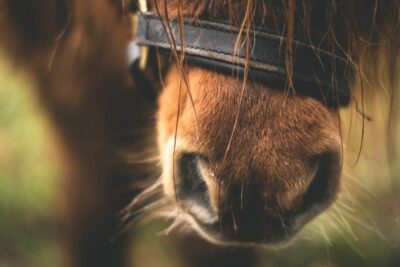🐎🐎How important are carbohydrates for horses?
How important are carbohydrates for horses?
All horses need carbohydrates in their diet. But the type and amount of carbohydrates they ingest can affect their health.
'Carbs' are commonly found in weight-loss diets, whether it's no carbs, low carbs or no carbs after 5pm! Because there are different types of carbohydrates, often given different names, it is no wonder there is a lot of confusion about them, both in human and equine nutrition.

The statement 'I want a low-carbohydrate feed for my horse' has become popular in recent years. The reasons, or possible reasons, for wanting low-carb horse feed may be a desire to influence or modify behaviour, or a susceptibility to so-called carbohydrate diseases, including: Tying-up, Cushing's, laminitis or insulin resistance. But before trying to eliminate all carbohydrates, we need to know more about the carbohydrates in equine diets.
Carbohydrates in equine diets can be broadly divided into two types: structural and non-structural.
Forage and hay are typical carbohydrates
Since most grain concentrates contain a combination of maize, barley, oats, wheat or molasses, it should come as no surprise that the non-structural carbohydrate content is high. To minimise non-structural carbohydrates, feed more good-quality roughage sources. Table 1 shows, on average, the percentage of non-structural carbohydrates in different forages and feeds.
Non-structural carbohydrates with associated disorders.
Cushing's disease is a problem that occurs in many horses, especially old horses, and can be affected by the non-structural carbohydrate content of the diet. Cushing's disease results from a tumour in the pituitary gland. Two recognised complications of Cushing's disease are laminitis and diabetes mellitus. Lameness and diabetes mellitus both seem to result from insulin resistance. Because insulin is needed to remove large amounts of glucose from the blood after a meal, diets high in non-structural carbohydrates (sugar) can exacerbate diabetes mellitus and increase the risk of laminitis in horses with Cushing's disease. It is therefore common practice for vets and nutritionists to reduce the amount of non-structural carbohydrates in the diet of horses with Cushing's disease, laminitis and insulin resistance.
Tying, characterised by severe muscle pain and cramps after exercise, is also thought to be related to dietary carbohydrates. Two separate problems have been identified for horses with chronic episodes of tethering. One problem is a glycogen storage disorder characterised by accumulation of a non-biologically available sugar in their muscles. This condition is called polysaccharide storage myopathy (PSSM) or equine polysaccharidemyopathy (EPSM). In other horses with chronic stalling, a problem with muscle contractility is the cause. This problem is called recurrent exercise rabdomyolysis (RER). For both groups of horses, dietary modifications, including a reduction in non-structural carbohydrates and an increase in fat and fibre, have been shown to be beneficial in minimising the occurrence of stalling.
The conclusion:
The desire to create a low-carbohydrate diet is actually a method of controlling the amount of non-structural carbohydrates (sugar) in the horse's diet. Structural carbohydrates (fibre) should not be the target of elimination, as fibre is essential for proper functioning and mobility of the horse's digestive system. It is still recommended that horses get at least 1.5% of their body weight per day in dry feed to get essential fibre. To reduce the non-structural carbohydrate content of the diet, consider eliminating grain, soaking hay before feeding it to the horse, or choosing hay known to have a lower non-structural carbohydrate content.
